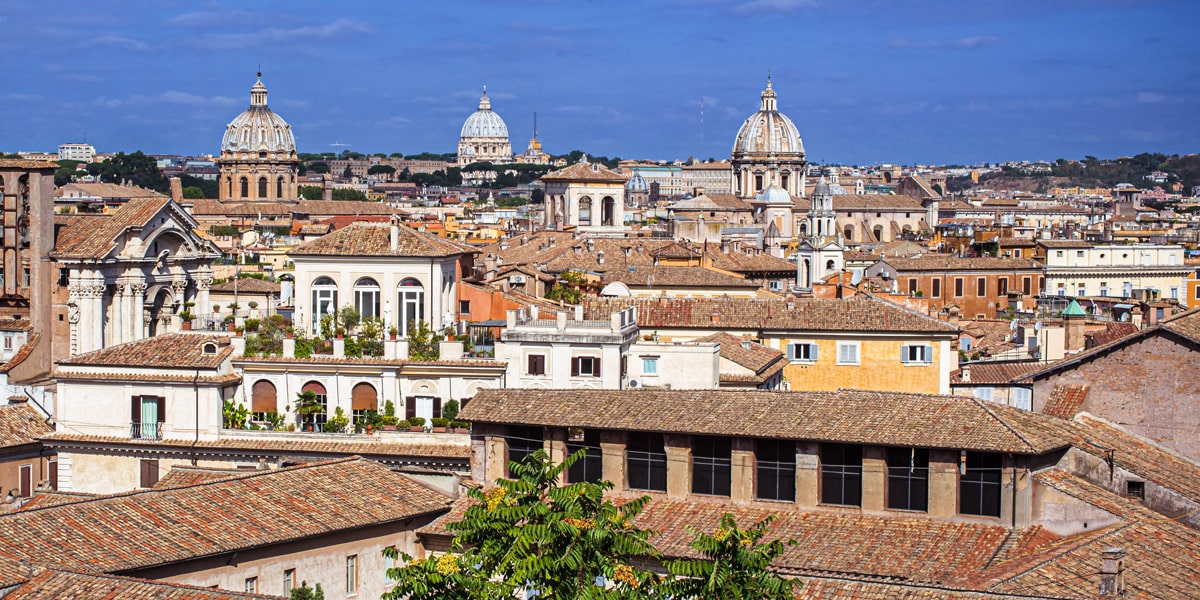

12970 travellers read
Written by: Kate Zusmann

The Centro Storico is the historic centre of Rome, home to many of the city’s main points of interest. However, there are also 22 different rioni, or districts, in the Eternal City. Several of these make excellent choices for where to stay during your Roman holiday.
Contents
ToggleSee also Rome Three Day Perfect Itinerary.
The historic centre of Rome and its geographical centre are two entirely different places. Rome is a vast metropolis—the largest city in Italy—with a population of around 4 million. Since most buildings are 5–6 storeys tall, the city sprawls extensively. The ring road alone has a diameter of about 20 km. And with countless narrow streets and a laid-back Italian pace, transport in Rome can often feel chaotic.
Getting around can be time-consuming, so it’s essential to choose the right strategic location for your hotel. This allows you to enjoy and fall in love with the Eternal City by exploring mostly on foot—rather than wasting time and money on taxis or public transport.
Before any trip, it’s worth familiarising yourself with a map of the city to avoid staying too far from the key areas. Google Maps might highlight the geographical centre near the ever-busy Termini Station, but this does not align with the historical heart of Rome.
Below, you’ll find a map with Rome’s main landmarks—places that immediately come to mind when you think of the city. Even if you’ve never been, you’ll have heard of many of them in school or from films: the Colosseum, Pantheon, Vatican, Trevi Fountain, Roman Forum, Spanish Steps, and many more.
It’s worth noting that many key sights are concentrated around the Pantheon area.
Using the map below, you can choose a hotel in the historical centre:
By the standards of Ancient Rome, the Vatican was considered a remote location. So when someone says, “We stayed right next to the Colosseum,” or “near the Vatican,” it may sound impressive—but locals familiar with Rome might just smile knowingly. Still, this is far preferable to staying on the city’s outskirts, where several bus journeys (or even a metro ride) are needed just to reach Centro Storico.
Speaking of the metro, the closest stations to the historic centre are Barberini (a 10-minute walk from the Trevi Fountain), Spagna (for the Spanish Steps), Colosseo (for the Colosseum), and Ottaviano (for the Vatican Museums). Unfortunately, there is no metro service within the core of the most captivating part of the city—an area that is vast.
If you choose to stay in the historic centre, you can reach most of the main attractions in 10–30 minutes on foot and enjoy your holiday as efficiently as possible. I recommend checking our ratings for the best 3-star, 4-star, and 5-star hotels in Rome. For budget travellers, there are also many excellent hostels in the historic centre.
Watch our video featuring the top 30 attractions to visit in Rome.
The key takeaway is that the Pantheon is the heart of Rome. When selecting accommodation, always check the distance from your hotel to the Pantheon. Here are three useful tiers of proximity:
Read our article on the best hotels with a view.
Tip: If you’re visiting Rome during the hot summer months, pay close attention to whether the hotel has air conditioning—it’s surprisingly not guaranteed. The same applies in winter; make sure the hotel offers heating.
Read more about Rome’s weather in July and August.
Many visitors search for hotels with swimming pools. While these are available in Rome, they tend to be more expensive. Keep in mind that the nearest beach is only 30 minutes away, and Italy is full of stunning coastal spots. Rome, however, is about history, culture, cuisine, and shopping. If your goal is a sunlounger and sea breeze, a beach destination may be a better fit.
One more practical consideration: Wi-Fi. Despite living in the 21st century, free internet is not always standard in Rome’s accommodation. Always check this in advance to avoid paying a daily fee that can quickly add up.
If you are looking for the best bars, nightclubs, and restaurants, the Trastevere and Testaccio districts are ideal. Even if nightlife is not your priority, Trastevere is still a must-visit thanks to its authentic charm and the best local restaurants. It’s also one of the most historically rich areas of Rome. On the other hand, if you’re seeking a romantic getaway, consider staying on Aventine Hill—peaceful, picturesque, and ideal for couples.
If it’s your first trip to Rome, choose a hotel in the Centro Storico. From here, you can walk to all major landmarks and museums without relying on transport.
The peak season for hotel rates in Rome begins in late May, continues through June, early July, September, and October. During these periods, prices can be double—or even more—compared to the low season. Family rooms in particular sell out quickly, so booking well in advance is essential.
April and May (excluding Easter) are excellent times to visit, offering milder weather and better value for money. Plus, Rome celebrates its birthday on 21 April, with events and celebrations across the city—a wonderful time to experience the capital.
Book your hotel 3–6 months ahead of your trip, as close to the historical centre as possible. This way, you’ll avoid the need for public transport, save time and stress, and enjoy the magic of Rome from the very first moment!
Author: Kate Zusmann
This website uses cookies. For more info read the cookies policy
RomeItaly.guide © 2025. Created with love by Roman experts and guides.